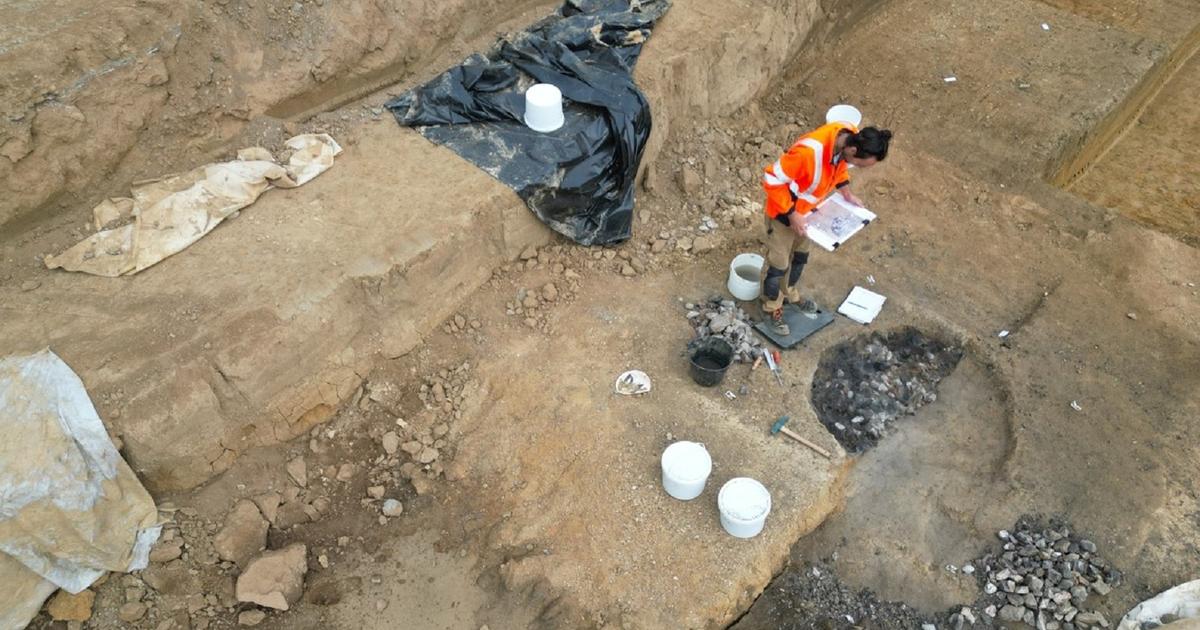Preventive excavations carried out before the construction of a car park in Cavalaire-sur-Mer made it possible to uncover one of the oldest stone houses identified in Provence.
The work planned as part of the urban project in the town center of Cavalaire-sur-Mer (Var) may be slightly delayed. Under the 4,200 m² of land analyzed since October by a team from the National Institute for Preventive Archaeological Research (Inrap), the remains of a Neolithic house dating from 5,400 BC were discovered.
The seven meter by five meter dwelling, with parallel built walls and a badly damaged apse, is notable for the use of a mixture of earth and stones, comparable to raw earth concrete, and pieces ceramic. « They had to use what they had on hand », estimates Raphaëlle-Guilbert-Berger, responsible for preventive excavations. The archaeological team had the opportunity to dig up to four meters underground, due to the project to build a parking lot with underground. « This is a rather exceptional depth. », specifies the archaeologist.
National Institute for Preventive Archaeological Research (Inrap)
The remains discovered « are part of the Neolithic current of the cardial impressa, the second expansion of the Neolithic movement, which developed in the Mediterranean from 5400 to 5500 BCE », explains Raphaëlle-Guilbert-Berger. There are already two archaeological sites that are part of the cardial impressa movement in Italy. That of Cavalaire-sur-Mer is the first in France.
From Greece to the South
According to Inrap, which details the discovery on its website, the Neolithic current spread rapidly from east to west around 6000 BCE. « From Greece, it reached southern Italy (Sicily, Apulia, Calabria), to extend to the Gulf of Genoa and the South of France (Côte d’Azur, Languedoc) around 5800 BC our era ». Around twenty years ago, at Peiro Signado in Languedoc, excavations led to the discovery of a rare example of a habitat attributed to the Early Neolithic, dating from – 5800.
The Inrap archaeological team will continue its excavations until the end of February, to try to discover other remains under the house. Although this discovery is quite unprecedented, Raphaëlle-Guilbert-Berger still regrets the absence of objects. « In terms of material culture it is quite poor », she explains. At the end of the excavations, the team of archaeologists will publish a report allowing us to learn a little more about the progression of the Cardial Impressa current in the Mediterranean.
